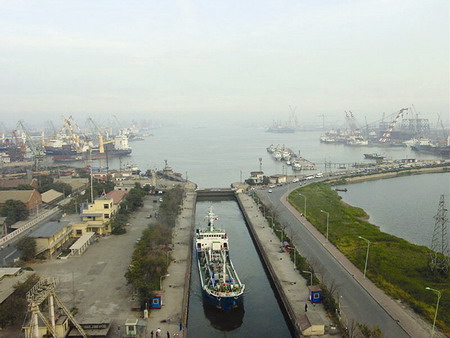|
 |
| Tianjin Port |
Tianjin Port has begun construction on two important docks which will bring in 58 million tons of cargo throughput when completed.
The new port projects, Nanjiang Ore Dock, with a total investment of 2.942 billion yuan, and the Shenhua Coal Dock Ancillary Project, with a total investment of 3.779 billion yuan, kicked off July 28.
The 400-meter-long Nanjiang Ore Dock is designed to handle 23 million tons of cargo annually with a berth large enough for a 300,000-tonnage bulk carrier.
“The dock will satisfy China’s inland factories’ growing demand for imported ores by sea and reduce the unloading costs of ores imported through Tianjin Port, which in turn will strengthen the port’s competitiveness in handling ores,” said Yu Rumin, President of Tianjin Port (Group) Co.
Shenhua Coal Dock Ancillary Project is being co-built with the country's largest coal miner, China Shenhua Group.
The two projects are part of Tianjin’s efforts to build the Binhai New Area into North China’s shipping center and an international logistic hub, He Lifeng, Director of Binhai New Area Management Committee, said at the groundbreaking ceremony.
Tianjin Port, located in the Binhai New Area, is the second largest general port in China, inferior to Shanghai port. Although China’s exports have slumped due to the ongoing financial crisis, the port handled 184 million tons of cargo and over 416 million containers in the first half of the year, up 1.2 and 1.9 percent respectively compared to the same period last year.
“Tianjin Port is the municipality’s biggest comparative advantage and core resource. The municipal government is bent on accelerating its infrastructure construction and expanding its functions,” He said.
Under the national development strategy, the Binhai New Area is being positioned as North China’s shipping center and an international logistic hub. It is expected to become another asset for regional development, following the rise of the Shenzhen Special Economic Zone and the Shanghai Pudong New Area.
By Guo Changdong |

